News
Ship-by-Truck Movement comes to Sheridan in 1920

Trucks, like this diecast 1920’s model, were featured in the Ship-by-Truck movement.
Today, large trucks are everywhere on the highways and interstates, carrying everything from cattle and sheep to large wind turbine blades. But this was not always the case.
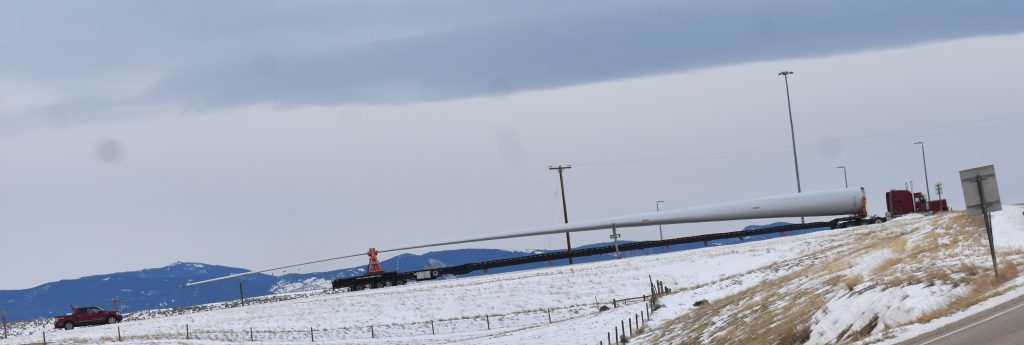
Before the early 1900s, shipping was done by train, and freight wagons drawn by mules, horses or oxen, moved the goods from the rail head to the towns. Cattle and sheep were driven horseback to the rail heads for shipment to eastern feedlots.
One of the first to see advantages of shipping by trucks, as well as seeing a new way to sell tires and auto repairs was H.S Firestone, president of the Firestone Tire and Rubber Company.
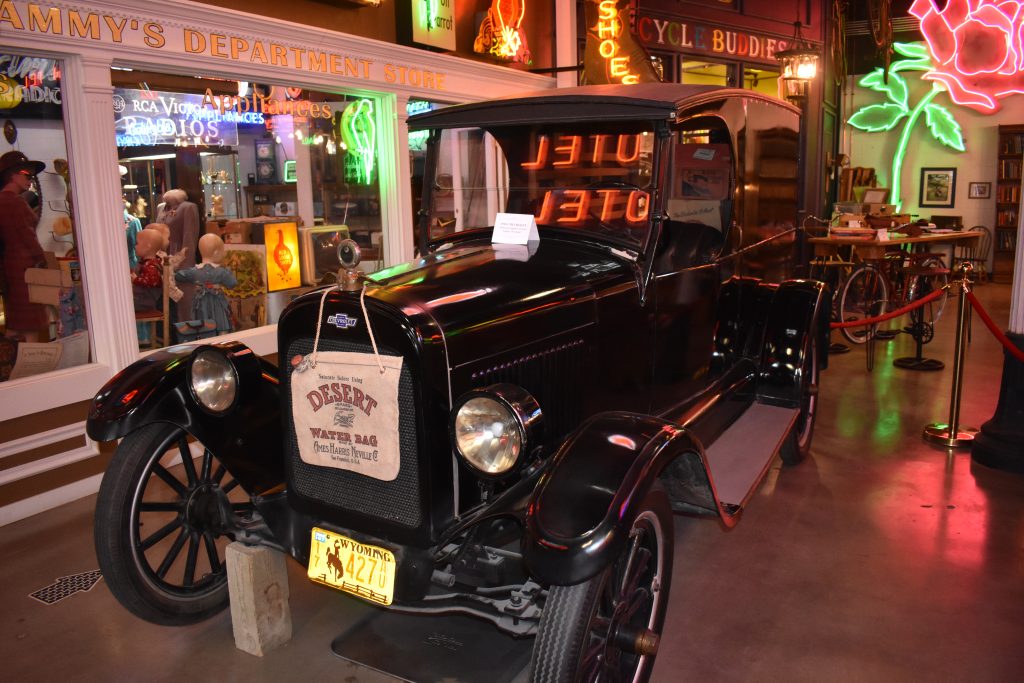
In 1918, he debuted the Ship-By-Truck advertising campaign, as is shown in this October 1919 Rock Springs Rocket article:
FIRESTONE STARTS NATIONWIDE MOVE TO SHIP-BY-TRUCK The Ship-By-Truck movement originated with H.S. Firestone, president of the Firestone Tire and Rubber Company. Bureaus have been established in practically every city in the country by the Firestone Company. These bureaus are operated entirely independent of the tire business. The chief function of these bureaus is to correlate the activities of the shipper and motor truck transportation companies; to locate and establish return-load bureaus throughout the rural communities where farm produce may be collected to be sent by motor truck to the city markets; to obtain data relative to the cost of motor truck operations in inter-city service; to work with truck operators and shippers in establishing equitable motor truck shipping rates, and to contact educational campaigns in the interest of motor truck transportation among the farmers and other commodity shippers. It will be seen that the work for the bureaus corresponds to the work that conducted by the highways transport committee.
To use trucks for shipping goods there had to be better roads. The first national road census in 1904 revealed only 141 miles of America’s rural roads were paved, only 18 had bituminous black top. Most were little more than graveled county roads.
With a 5500% increase in motor vehicle registrations between 1900 and 1910, paved roads were becoming a necessity, and the ship-by-truck movement brought the state of the roads to the government’s attention as well. In 1913, the Post Office Appropriations Bill allotted $500,000 to improve roads for rural mail delivery.
This notice below appeared in The Wyoming State Tribune, on July 16, 1920. The ad for REO Trucks appeared in The Guernsey Gazette, April 1920, also promoting the movement. The copy is below.
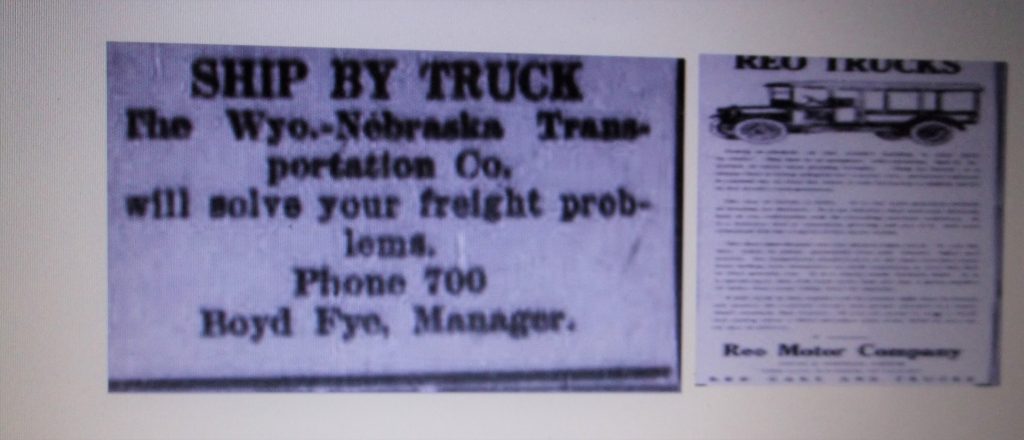
REO TRUCKS Nearly one fourth of the world’s hauling is now done by truck! This fact is so pregnant with meaning that it is worthy of more than passing thought. “Ship-By-Truck” is the slogan that is being adopted the country over, wherever business is carried on, so that the truck is fast becoming a mighty factor in the world’s transportation.
The day of trucks is here. It is the most practical method of hauling yet devised… It is an industry that will soon out-rank that of the self-binder and the threshing machine combined. It is a business that is constantly growing and one that it will soon command the respect of the whole world.
The REO Speedwagon was the pioneer light truck. It was the first truck to adopt pneumatic tires and electric lights and starter. Its competitors laughed at it at the time, but have since been falling over themselves to build something as near like REO as they possibly can. It is a sturdy truck, honestly built. It is a speed wagon that will haul more tons per day a given number of miles than many trucks twice its capacity. A full stock of REO repairs will be carried right here in Guernsey insures the constant service that people demand of a truck. Don’t overlook that feature….If you are going to want a truck this spring select a REO and place your order NOW so you can be sure of delivery. REO Motor Company DIVER & SHEDRON, AGENTS “THE GOLD STANDARD OF VALUES” REO CARS AND TRUCKS.
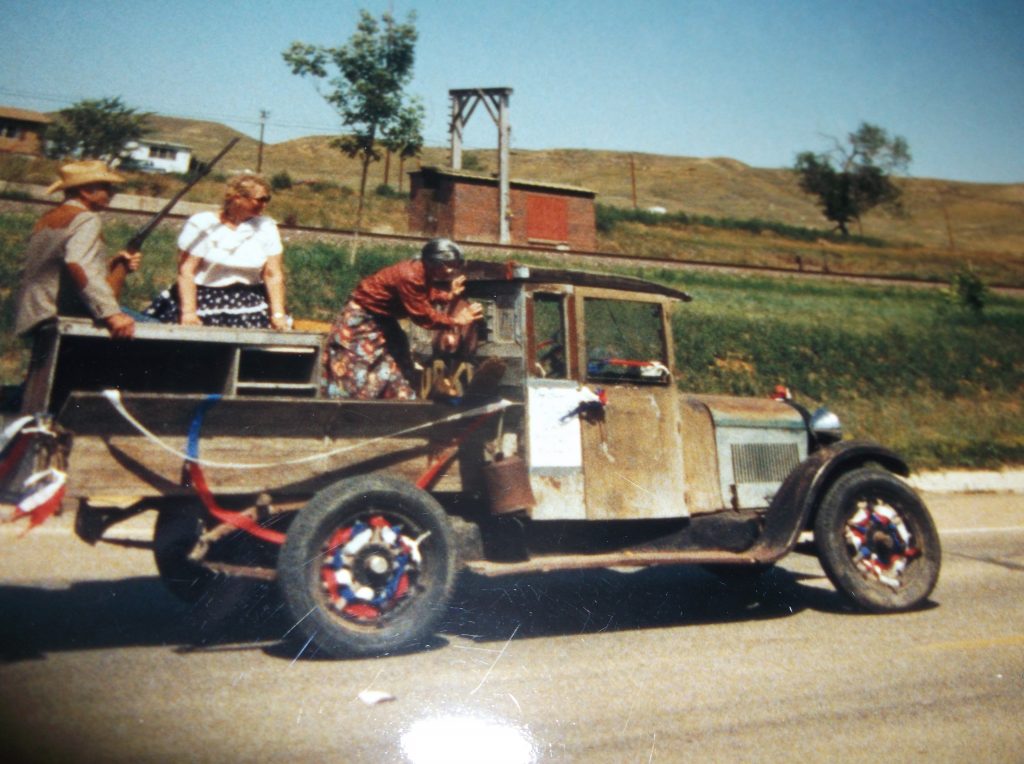
Although the ‘Freedom Convoy” in Canada this week is a protest movement, parades, like the one mentioned below, were used to promote the idea of using trucks for shipping goods across the country.
Feb 7, 1920 Sheridan Enterprise. TRUCKS TAKE PART IN BIG PARADE HERE ‘Ship-By-Truck’ Plan Is Stimulated with Big Parade on Main Boy Scouts Head List. 20 Great Trucks Demonstrate Possibilities of Large Development Here
Promptly at 3 o’clock this afternoon there was the rhythmic rattle of drums and twenty great trucks wheeled into line in front of the city hall for the parade first ever held in Wyoming for the purpose of stimulating the Ship-By-Truck movement. The truck which headed the parade carried the Boy Scouts Corps. Each truck bore a banner inscribing the ‘Ship-By-Truck’
The parade went from the City Hall to Alger Ave, then Main street and south to Burkitt street. Here it turned and passed around the block to the east, coming back to main street and then down Main Street to Tiger Ave……
Four quads represented the state highway department, The Sacles Motor company entered two Ford Trucks, one rated at a ton capacity the other half ton. The Riley Motor Company was represented by two half-ton White Trucks. The REO Garage had an REO Speed -wagon in the parade…. (Several other brands were included in the parade, Patriots, a Maxwell, and a Kissel.) There were also, …two Stewarts and Ford ton truck carrying a Fordson Tractor.”
The parade was not for the purpose of advertising various makes of trucks, but to create interest in the Ship-By-Truck movement, which is at the present time sweeping the country and is being taken up locally by a committee representing the Commercial Club.
Perhaps nothing since the advent of the passenger automobile holds greater possibilities for the rapid development of the country than the Ship-By-Truck movement. It means bringing the farms nearer to the market by cutting down the time necessary to reach them, and by making it possible to haul much larger tonnage, providing of course, there are good roads. The Commercial Club is putting forth it’s best efforts to develop roads and to create interest in the Ship-By-Truck movement.
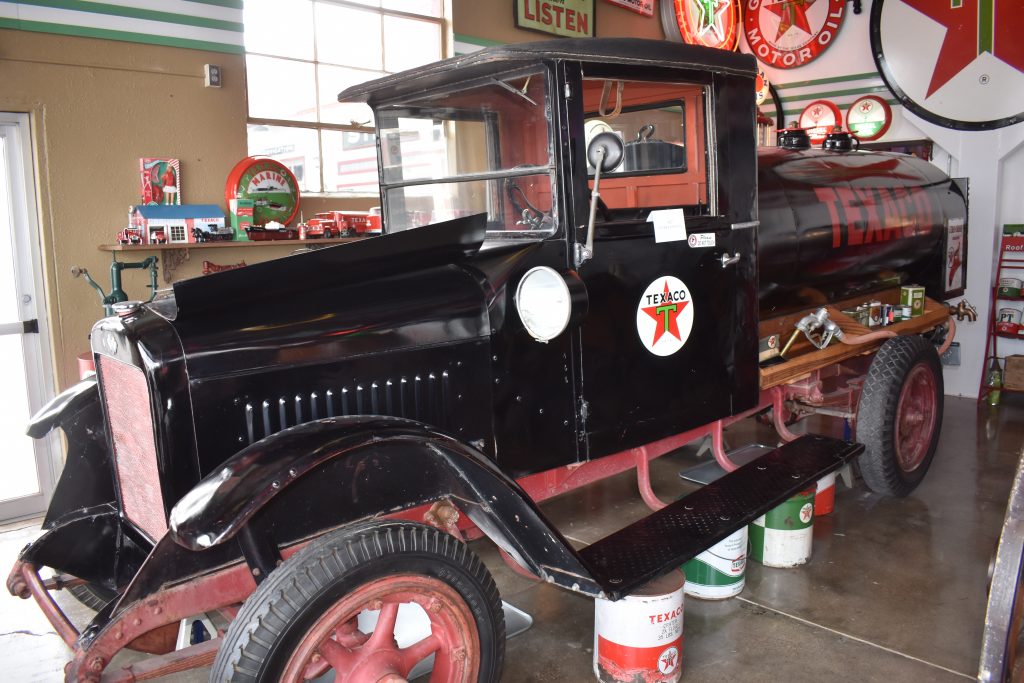
The Sheridan Post Sunday, February 8, 1920. PROMOTING MOVEMENT TO “Ship-By-Truck” Many Trucks in Parade that Was Staged Yesterday Afternoon. The “Ship-By-Truck” parade scheduled for yesterday afternoon was pulled off promptly on the hour named, 3 o’clock. About twenty truck owners and dealers were in line with their trucks. The parade was headed by the Boy Scouts drum corps, with twelve drummer boys and two color bearers. The lads showed much proficiency and kept excellent time as they marched through the streets. In the parade were all kinds of trucks, big and little, from the four-ton monsters to the three-quarter ‘farmers’ utility truck. Suspended on each side of the vehicles were banners bearing the inscription “Ship-By-Truck” and generally bearing the name of the truck and the dealer who handled it. Each dealer was limited to two trucks, so the number in line was not as large as it would have been had there been no restrictions. Some of the dealers loaded tractors on their trucks, and others filled them with tires and other accessories. While the parade was not as large as some had expected it was, nevertheless, very credible for the first attempt.
Although some people felt trucks would be competition with the railroad, most disagreed, feeling that trucks would assist the railroad, and would be used for ‘short-hauls’ only.
In The Sheridan Enterprise, on April 24, 1920 there is this article, SHIP BY TRUCK PLAN OFFERS MANY REASONS FOR CONSIDERATION With good roads, the truck comes in mighty handy for prompt transporting merchandise and for bringing in farm products, especially in an emergency, as when there is a tie-up on the railroad or when there is need of prompt service that cannot well afford to wait on freight train schedules that are not always maintained. Of course, there is no idea that they may ever quite take the place of the steam cars for long distance hauling; but for comparatively short distances the freight trucks is just the thing. When the service has become established, we shall be more independent of strikes, washouts, freight congestion and the like, on the railroads.
Then, too, when we begin to Ship-By-Truck we shall have a higher appreciation than ever of the value of good roads, and be more insistent on multiplying them and keeping them up until there shall be no bad roads In any part of the country to vex the farmers or any others who traverse them with any sort of vehicles, and cause them heavy loss. So, it is plain that the Ship-By-Truck movement promises to be an excellent uplifting movement in more directions than one, a thorough convenience and fine economy that will mean much for the general good of both the urban and the rural communities and their manifold businesses.
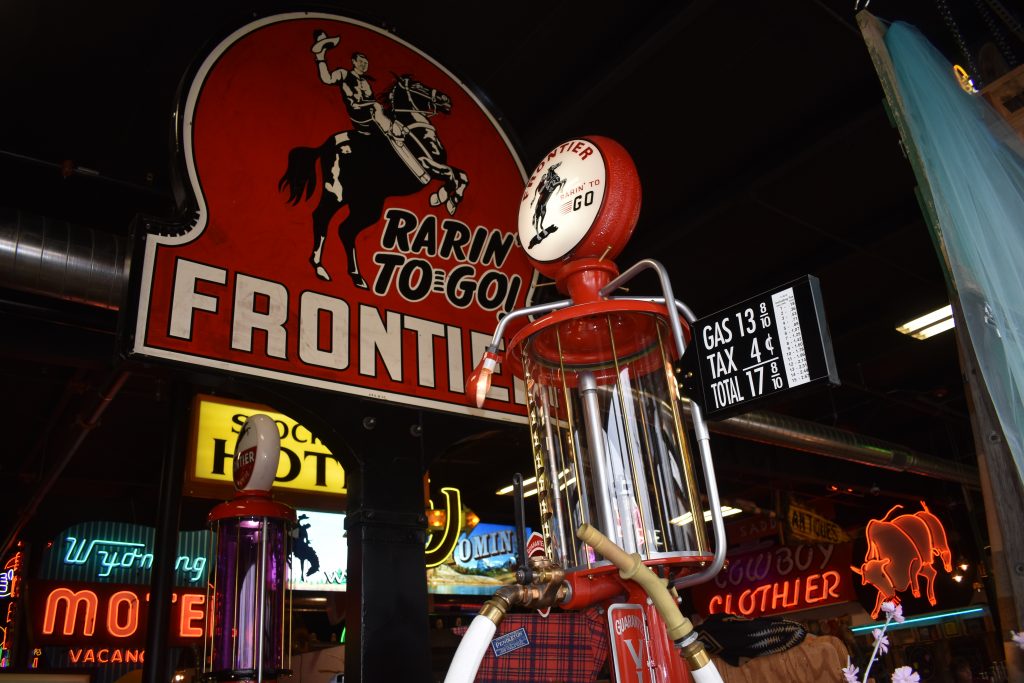
In 1956, President Eisenhower expanded the U.S. transportation system by introducing what was titled the National Interstate and Defense Highways Act, which later became known as The Federal-Aid Highway Act of 1956. This bill earmarked $25 billion to develop highway infrastructure across the United States.
These interstates are still in use today creating a system of highways to transport goods and services across the country. Trucks and railroads work in tandem to keep our shelves stocked and our country working. Without trucks the world would be a much different place.


Glenn D Sweem
February 12, 2022 at 7:31 pm
An excellent article! Thank you.
Sandy
February 13, 2022 at 10:11 am
Such an interesting article to coincide with the Freedom Convoy movement. Thank you for this insightful documentation, Cynthia!